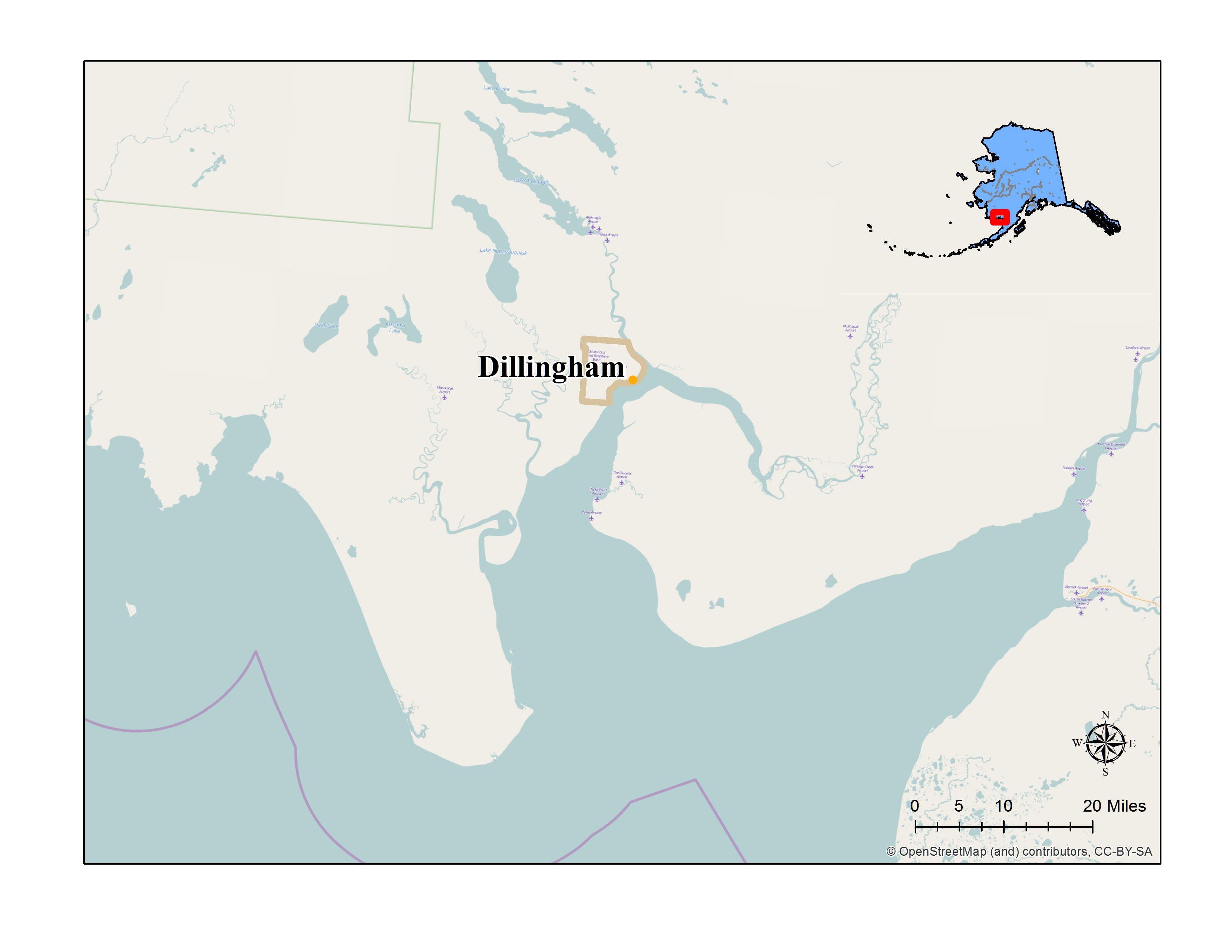City of Dillingham
1st Class City
2022 Population: 2,222
Size: 36.84 Square Miles
Dillingham Historic Preservation Commission:The goal of the Historic Preservation Commission is to conduct a survey of the historic, architectural, and archaeological resources within the community and prepare a plan for the surveyed resources. The commission reviews and comments on all proposed National Register nominations for properties within the city boundaries.
Certified: March 30, 1990
This commission is presently inactive.

-
CLG Grants
Survey and Inventory Grants
Inventory of Historic Buildings. Phase I, 1990; Phase II, 1992.
National Register of Historic Places Grants
Mary Carlson House and Chamber of Commerce Building National Register Nominations. 2 buildings. 1993.
Commission Training Grants
Economic Perspectives: Making the Historic Preservation Connection Workshop. 1993, 1994.
-
A Brief History
-
Yup'ik people lived in the Bristol Bay area for thousands of years before Russians established Alexandrovsk Redoubt in 1818 across the Nushagak River from present day Dillingham. By the time Europeans came to the region, the people spent the winter months in permanent villages along the Nushagak River. Within the City of Dillingham are former village sites of Kanakanak, Chogiung, and Aleknagic (Wood River Village). The Russian post made Nushagak Bay the economic center in the area. Over the years the people began to accept the Russian Orthodox religion, and in 1837 the church opened a mission at Nushagak.
The Alaska Commercial Company purchased the post from the Russian American Company in the 1860s and continued to trade for furs in the area. The U.S. Signal Corps briefly had a meteorological station nearby in the early 1880s. In 1884 the Arctic Packing Company of San Francisco built the first salmon cannery in Nushagak Bay, at a site east of today's Dillingham, initiating settlement and industrial development. Ten more canneries were built in the next 17 years, and in 1901 the Alaska-Portland Packers Association built the cannery near Snag Point, now the central business district of Dillingham. Many Native people moved around the canneries, and many Euro-Americans came for work as fishermen. The Euro-Americans, many of Scandinavian descent, settled in the core of today's Dillingham. A number of the canneries closed in the 1930s because of consolidation, and others after, in part because of the shift to frozen over canned salmon processing.
In 1904 a post office opened at Kanakanak and it was named Dillingham. As a Senator, William Paul Dillingham of Vermont had toured Alaska with a congressional committee in 1903, though he was not in the Bristol Bay region. The post office moved to Snag Point in 1944, and the community changed its name from Snag Point or Chogiung to Dillingham in 1947. The 1918-19 influenza epidemic hit the region hard. The Bureau of Education added a hospital and orphanage to its school at Kanakanak. In 1930 the orphanage closed, and in 1946 the school closed and the students went to the school at Snag Point.
Today's Dillingham replaced Kanakanak as the population center in Nushagak Bay, in large part because the Snag Point cannery continued to operate. Several non-cannery stores opened there. In 1948 the Dillingham townsite was formally surveyed. It was within the boundaries of the Bristol Bay Borough that incorporated in 1962, and the City of Dillingham incorporated the next year.
The Togiak National Wildlife Refuge (initially the Cape Newenham refuge) north and west of Dillingham was created in 1969. It was enlarged in 1980. The refuge offices, along with a number of federal, state and local government agencies are in Dillingham which is now the regional government and medical center for the Bristol Bay area, along with being a fisheries hub.
-
-
National Register of Historic Places Listings
Pilgrim 100B Aircraft
Alaska Aviation Heritage Museum (Anchorage)

